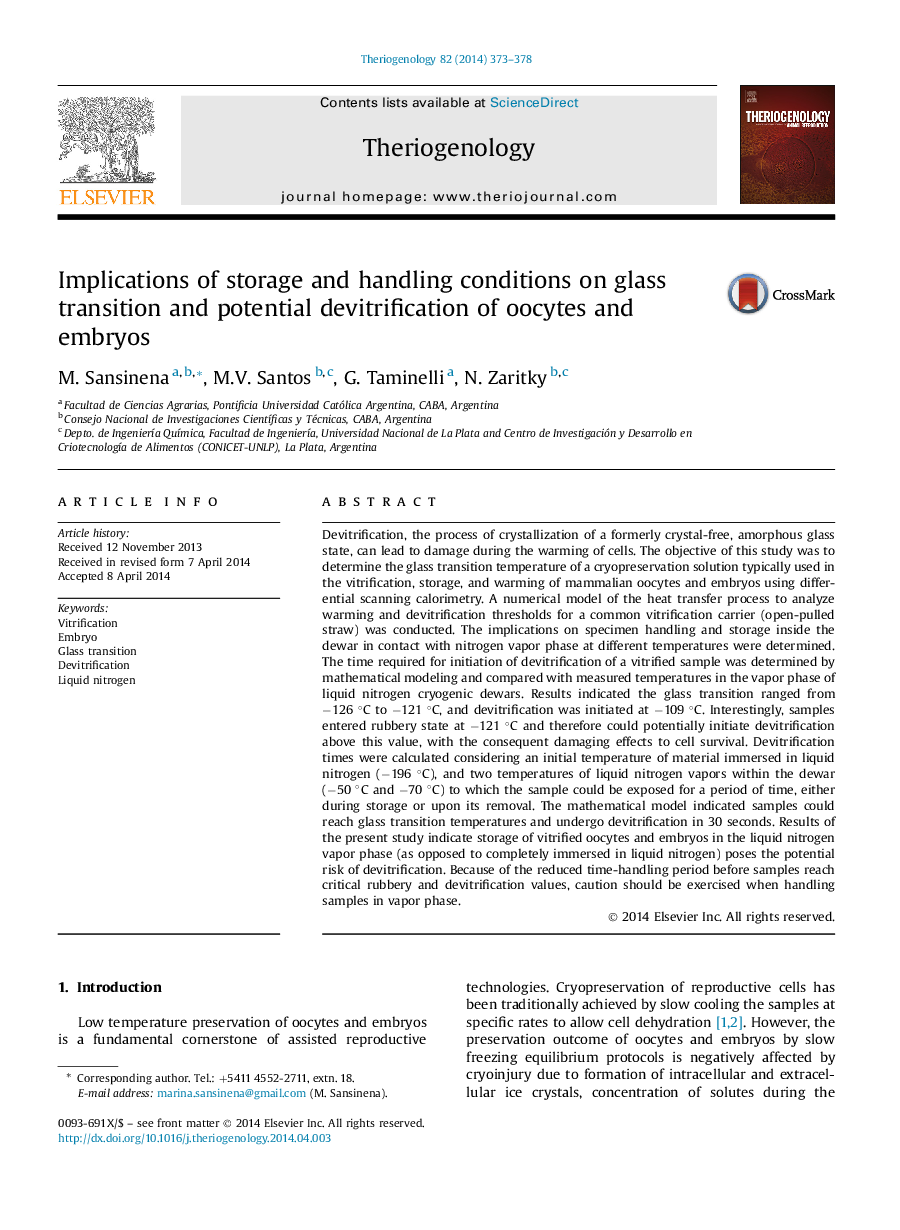| کد مقاله | کد نشریه | سال انتشار | مقاله انگلیسی | نسخه تمام متن |
|---|---|---|---|---|
| 2095083 | 1082073 | 2014 | 6 صفحه PDF | دانلود رایگان |
Devitrification, the process of crystallization of a formerly crystal-free, amorphous glass state, can lead to damage during the warming of cells. The objective of this study was to determine the glass transition temperature of a cryopreservation solution typically used in the vitrification, storage, and warming of mammalian oocytes and embryos using differential scanning calorimetry. A numerical model of the heat transfer process to analyze warming and devitrification thresholds for a common vitrification carrier (open-pulled straw) was conducted. The implications on specimen handling and storage inside the dewar in contact with nitrogen vapor phase at different temperatures were determined. The time required for initiation of devitrification of a vitrified sample was determined by mathematical modeling and compared with measured temperatures in the vapor phase of liquid nitrogen cryogenic dewars. Results indicated the glass transition ranged from −126 °C to −121 °C, and devitrification was initiated at −109 °C. Interestingly, samples entered rubbery state at −121 °C and therefore could potentially initiate devitrification above this value, with the consequent damaging effects to cell survival. Devitrification times were calculated considering an initial temperature of material immersed in liquid nitrogen (−196 °C), and two temperatures of liquid nitrogen vapors within the dewar (−50 °C and −70 °C) to which the sample could be exposed for a period of time, either during storage or upon its removal. The mathematical model indicated samples could reach glass transition temperatures and undergo devitrification in 30 seconds. Results of the present study indicate storage of vitrified oocytes and embryos in the liquid nitrogen vapor phase (as opposed to completely immersed in liquid nitrogen) poses the potential risk of devitrification. Because of the reduced time-handling period before samples reach critical rubbery and devitrification values, caution should be exercised when handling samples in vapor phase.
Journal: Theriogenology - Volume 82, Issue 3, August 2014, Pages 373–378
